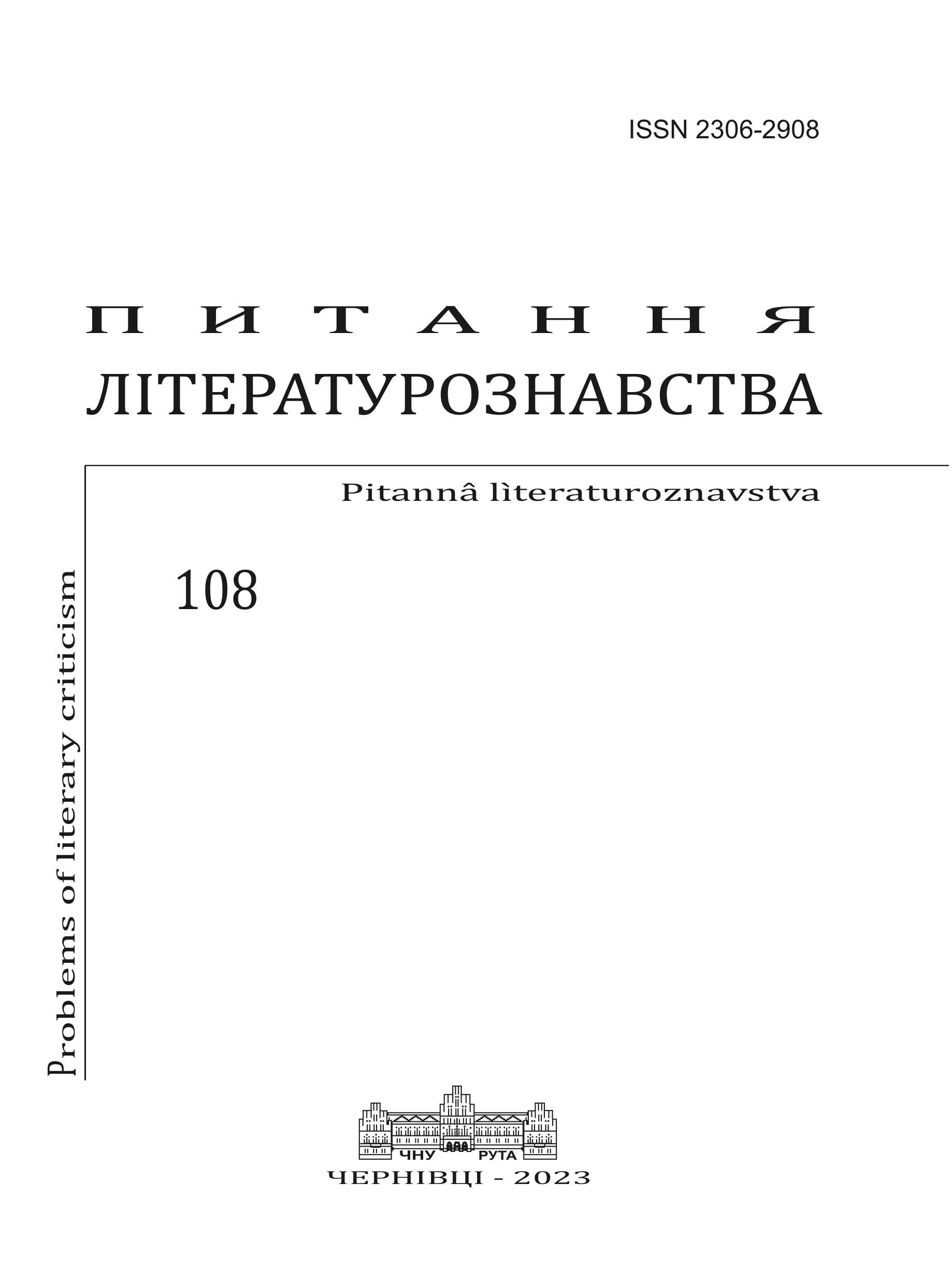Мультимитець у «Музагеті»: інтермедіальна домінанта творчості Михайла Жука
Multi-Talented “Muzaget”: Intermedial Dominant in the Works by Mykhailo Zhuk
Author(s): Alyona TychininaSubject(s): Language and Literature Studies, Studies of Literature, Ukrainian Literature, Theory of Literature
Published by: Чернівецький національний університет імені Юрія Федьковича
Keywords: Mykhailo Zhuk; “Muzaget”; Ukrainian modernism; symbolism; multi-artist; intermediality; poetics;
Summary/Abstract: The article examines the literary legacy of the multi-artist Mykhailo Zhuk (1883–1964) as a member of the “Muzahet” group (1919) and an author who, navigating the bifurcation points of his time, influenced the development of Ukrainian culture in the first half of the 20th century. The paper outlines the specifics of the modernist society’s activities in the historical context at that time. It highlights the characteristic features of the publication process of the multi-genre almanack “Muzahet”. The author pays particular attention to M. Zhuk’s contribution to maintaining the association’s activities. His Muzahet poetry, particularly in the poem “Wings” (“Kryla”), decodes metalogical components through picturesque and musical reminiscences. The dramatic poem “Autumn Night” (“Nich Osinniia”) synthesises poetic, musical, and dramatic narratives and consists of several tonally distinct “musical” parts, being an example of a quasi-symphonic structure. The author explores the intertextual interaction of the “Autumn Night” text with Goethe’s “Faust”, which serves as its hermeneutic key. The impressionistic story “Etude” (“Etiud”) is interpreted through the depiction of the act of creation, the “introduction of dreaminess”, harmony through abstract imagery, and the metaphor of blindness in the dual world of the artist. The story “Melancholy” conceptualises the intermedial problem of harmony related to voice, sound, listening, dialogue, silence, and pauses based on the family relationship crisis theme. The author points out that the auditory reception of the character aligns with his internally defocused state. The paper also analyses M. Zhuk’s review of V. Yaroshenko’s book “Lighthadows” (“Svitotin”) (1918), highlights the critic’s primary criteria, including the preservation of one’s own identity (by avoiding the influence of the “other”), the title, and the genre-compositional organisation of the book. The portraits of P. Tychyna, D. Zahul, and Yu. Mezhenko in “Muzahet” are noted to not only reproduce the faces of artists but also capture the characteristics of their character, their distinctiveness, and idio-stylistic dominants in their work. In conclusion, the author argues that Mykhailo Zhuk’s creative method draws on cross-mediality and the synergy of arts, emerging not as a technique but as an inherent trait. The harmonious unity of various artistic components in the text often provokes synesthesia – the ability of the recipient to visualise, hear, and feel the texts simultaneously.
Journal: Питання літературознавства
- Issue Year: 2023
- Issue No: 108
- Page Range: 28-48
- Page Count: 21
- Language: Ukrainian

